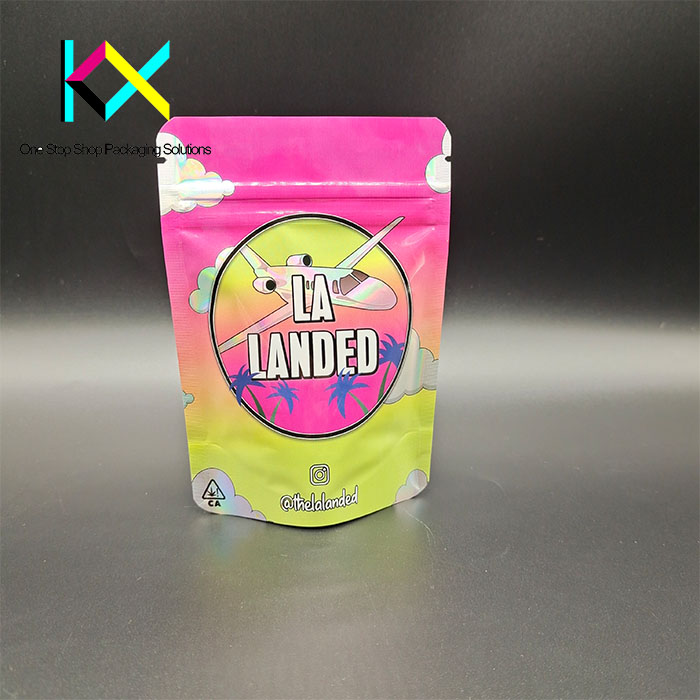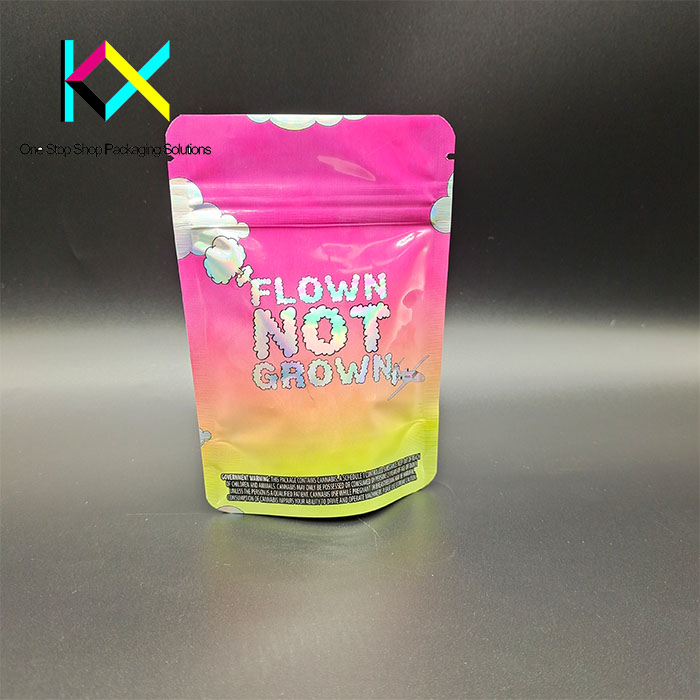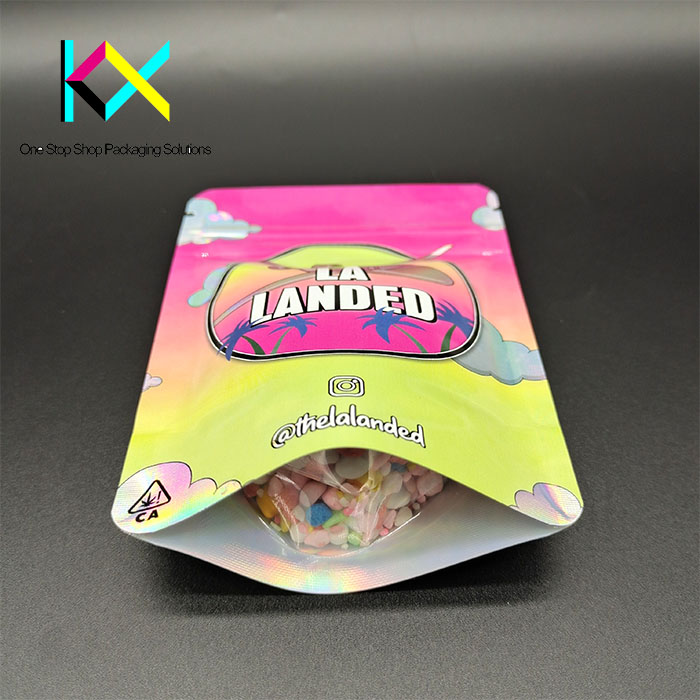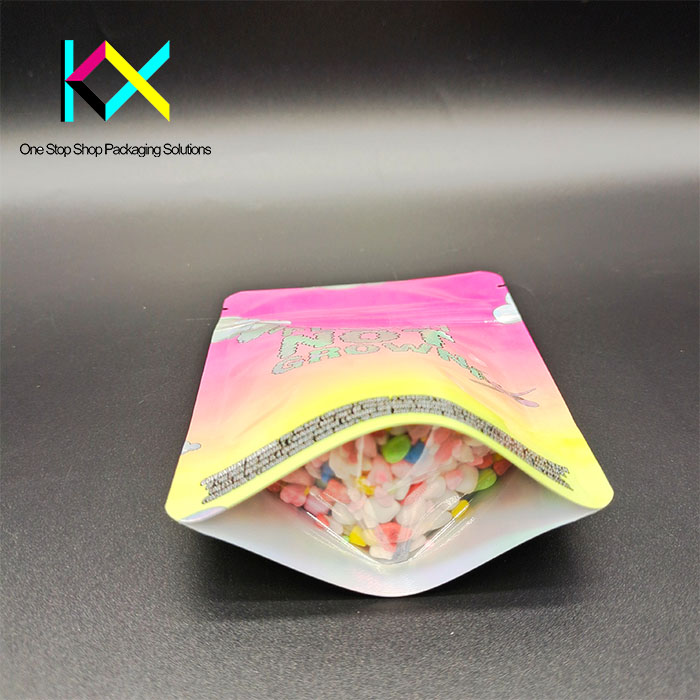How Many Layers Are in Plastic Packaging Bags? What Is the Role of Each Layer?
Plastic packaging bags are an essential component of the modern packaging industry, providing a versatile and cost-effective solution for a wide range of products, from food and beverages to cosmetics and pharmaceuticals. One of the key characteristics of plastic packaging bags is their multi-layer construction, which provides strength, durability, and specific functionality depending on the product requirements. In this article, we will explore the various layers found in plastic packaging bags and their roles, while also highlighting the digital printing technology used by Kexin Packaging to create high-quality, custom packaging solutions.

The Typical Layers of Plastic Packaging Bags
Plastic packaging bags typically consist of multiple layers, each serving a specific purpose. The number of layers and materials used can vary depending on the intended use of the bag, but the most common configurations involve two to five layers. Below is a breakdown of the typical layers found in plastic packaging:
Outer Layer (Print Layer)
- Function: The outer layer of a plastic packaging bag is primarily responsible for the print design. This layer is where brands showcase their logos, product information, and attractive graphics. It also provides the necessary protection against environmental factors, such as UV light, dust, and dirt, which can degrade the appearance of the product inside.
- Digital Printing Technology: At Kexin Packaging, we use advanced digital printing technology to ensure vibrant, high-resolution graphics that enhance your product’s shelf appeal. Digital printing offers numerous advantages, including the ability to print short-run custom designs and variable data, all while maintaining color consistency and high quality.
Middle Layer (Barrier Layer)
- Function: The middle layer of the bag typically acts as the barrier layer, providing protection against external factors that can impact the contents. This can include moisture, oxygen, and light, all of which can affect the freshness, shelf life, and quality of the product inside.
- Materials Used: Common materials for this layer include aluminum foil, metalized films, and specialty resins. For example, aluminum foil is often used for products requiring high protection, such as baby food, coffee, or pharmaceuticals.
- Functionality: The barrier layer is crucial for extending the shelf life of perishable products and preventing contamination. The choice of material depends on the nature of the product and its sensitivity to external elements.
Inner Layer (Sealing Layer)
- Function: The innermost layer of the plastic packaging bag is responsible for sealing the bag and maintaining its integrity during storage and transportation. This layer must have excellent seal strength to prevent leaks and ensure that the contents stay contained.
- Materials Used: Typically, this layer is made from polyethylene (PE) or polypropylene (PP), as these materials offer good sealing properties. For example, PE is often used for low-cost packaging, while PP may be used when additional strength or chemical resistance is required.
- Additional Functionality: Some inner layers may also be designed for food safety, such as preventing the migration of harmful substances from the packaging into the product.
Optional Layers (Additional Protection or Functionality)
- Function: Depending on the specific requirements, additional layers can be included to enhance the performance of the packaging. For instance, anti-static layers may be used for electronics packaging, while anti-fog coatings can be applied for fresh produce packaging.
- Materials: These additional layers are often made from specialized films or coatings that offer specific protective functions.
- Role in Branding: For high-end products, additional layers may be included to improve the aesthetic appeal, such as metallic finishes, soft-touch coatings, or embossing

Why Multi-Layer Packaging is Essential
The multi-layer construction of plastic packaging bags is a key factor in their success. By using a combination of materials that serve different functions, manufacturers can create packaging solutions that are not only functional but also cost-effective and environmentally friendly. The layering structure provides flexibility in material selection, which can be optimized for different applications.
- Customization: Multi-layer packaging allows manufacturers to customize the bag according to the specific needs of the product, whether that involves enhancing its shelf life, protecting its quality, or improving its visual appeal.
- Sustainability: At Kexin Packaging, we understand the importance of sustainability in packaging. By offering eco-friendly material options for multi-layer bags, such as biodegradable plastics or recyclable composites, we are committed to minimizing environmental impact without compromising on performance.

Kexin Packaging: Full Range of Laminated Bags with Digital Printing
Kexin Packaging is proud to offer a full range of laminated plastic packaging bags for various applications, including food packaging, retail packaging, and industrial packaging. Our multi-layer packaging solutions provide exceptional barrier properties, durability, and customization to meet the needs of modern businesses.
We specialize in flexible packaging and provide solutions such as stand-up pouches, flat pouches, zipper pouches, and more. With our advanced digital printing technology, we can print high-quality, customized graphics that align with your brand identity while ensuring that the packaging remains environmentally sustainable.

Why Choose Kexin Packaging?
- Customization: We offer a wide range of customized packaging solutions tailored to meet the specific needs of your products.
- High-Quality Digital Printing: Our cutting-edge digital printing technology ensures vibrant, sharp, and durable prints on every package.
- Sustainability: We provide eco-friendly options like biodegradable materials and recyclable composites for companies looking to reduce their environmental footprint.
- Full Range of Laminated Bags: From food to non-food applications, we have the expertise to deliver high-performance laminated packaging solutions that enhance your product’s shelf appeal and protect its integrity.
Conclusion
Plastic packaging bags, with their multi-layer design, offer a versatile, protective, and cost-effective solution for a variety of products. The combination of materials in each layer is critical to ensuring the packaging performs its intended function—whether it’s providing protection against external elements or ensuring a high-quality print for branding. At Kexin Packaging, we leverage advanced digital printing technology to create vibrant, eco-friendly, and customized packaging that meets the highest standards of quality.
Our expertise in producing a full range of laminated packaging bags makes us the ideal partner for businesses looking to enhance their packaging while staying ahead of sustainability trends.
You can visit our website to know more about our flexible packaging pouch:
